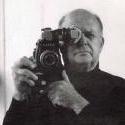
Axel
-
Posts
1,900 -
Joined
-
Last visited
Reputation Activity
-
 Axel reacted to deezid in Actually you can make the GH5 look very cinematic!
Axel reacted to deezid in Actually you can make the GH5 look very cinematic!
Shot on the GH5 in 3 days. A concept trailer done having a zero budget for our upcoming first feature film.
I really like what I can squeeze out of the internal 10 bit V-Log footage. DR, lowlight and colors are really good.
Everything was shot with sharpening and nr set to -5 and a Tiffen Black Pro Mist filter applied in front of the lens (12-35mm 2.8 V1, 20mm 1.7, 42.5mm 1.7) to make it smoother. Colorgrading done in Davinci Resolve. Drone shots by the DJI Mavic (the internal sharpening is hideous tbh...).
-
 Axel got a reaction from Dan Wake in how to simulate the original "shake" of the old movies shot on film?
Axel got a reaction from Dan Wake in how to simulate the original "shake" of the old movies shot on film?
Which clip was that?
I am not saying don't use retro looks. They are in the giant tool box, and everything is permitted. 99% of these tools are there to enhance the experience by reducing the input, to filter out mundane or distracting elements. The content of the images (the 'what' you see) should be as strong in itself as possible, without music enhancing it (and ironically often shiftening and lessening the original impact). A well-composed image will make it easy to choose the right style (the 'how'), be it sDoF, HDR, punchy, black & white, strong grain or moody colors. Or reduced image steadiness.
-
 Axel got a reaction from jonpais in how to simulate the original "shake" of the old movies shot on film?
Axel got a reaction from jonpais in how to simulate the original "shake" of the old movies shot on film?
Good point. It's a layer of meaningfulness, if you will. On the one hand people strive for ever higher resolution and and ever more realistic detail, on the other hand this never was the reason why audiences suspend their disbelief. They are captured by something that looks stylized, intentionally distorted, artistically transformed. It's not about reality, cleanness, it's about transcendence. Filmlook recipes during the last decade made these looks exchangeable. If not used with due subtlety und scrupulousness It's not perceived as a genuine quality (subconsciously associated with the old and magic techniques of big cinema) but as amateurish. It's then more linked to millions of cheap music videos on youtube.
EDIT: so if Dan Wake wants to simulate original "shake" of the old movies in 2017 he should be aware that the average viewer might also subconsciously see through this and spontaneously decide whether the whole simulation is worth suspending his disbelief.
-
 Axel got a reaction from Hans Punk in how to simulate the original "shake" of the old movies shot on film?
Axel got a reaction from Hans Punk in how to simulate the original "shake" of the old movies shot on film?
Hans Punk, have you ever been a projectionist? You sound like one. Only you and me and maybe a handful of freaks will notice a difference between a 'scientifically accurate' simulation and a cheap retro effect. This is true for a lot of film effects (light leaks transitions, grain overlays, filmstock simulating LUTs). Anything goes. In the end, no matter how 'realistic' it is, it's still a travesty. It's like the spice smoke burger restaurants spray on their meat, triggering a vague association of something that was char-grilled. No chief would fall for that.
-
 Axel got a reaction from Chris Oh in I have problems to speak in front of a camera
Axel got a reaction from Chris Oh in I have problems to speak in front of a camera
That's interesting. Inside I'm a textbook introvert, ridiculously shy, but I can jump over my shadow at will. Learned that in three years psychotherapy. The key, in a nutshell, is doing at any costs what your fears tell you to avoid. So do speak in front of a camera. The smartest people with the most interesting things to say often don't have professional voices (Stephen Hawking comes to mind, among others). And vice versa, some textbook extroverts, radiating self-confidence and with loud, pleasing voices, bundles of joy, are completely hollow and boring. Some novelist wrote, those extroverts wear their shallowest feelings on the surface.
A good voice is an authentic voice. You can't feign that. Analyze what bothers you about your voice/appearance. Are there false notes? Be yourself, say what you mean and feel in the most direct and simple way. Does your body language and facial expression betray your words? Then you may have the perfect radio voice but still won't convince yourself, let alone others.
-
 Axel got a reaction from jonpais in ETTR: Noise, Dynamic Range and Skin Tones
Axel got a reaction from jonpais in ETTR: Noise, Dynamic Range and Skin Tones
Not gone, but noticeably reduced to the point where it's no longer irritating. Agreed?
This is pathologic pixelpeeping anyway, isn't it?
One should try Neat, grain and a ProResLT. Maybe it's just that there are too few values to represent the 50 shades of grey of he flapjack, and with this data rate macroblocking can't be stopped at all.
-
 Axel got a reaction from Orangenz in ETTR: Noise, Dynamic Range and Skin Tones
Axel got a reaction from Orangenz in ETTR: Noise, Dynamic Range and Skin Tones
Macroblocking in the shadows is the encoder deciding that noise is no valid signal and overly simplifying the area. In case of a H.264 master, that distinction is in the upload file already and only gets worse when the original is reduced again by the YT processing. There are three strategies against that:
1. Get rid of noise using Neat Video. The downside to this is that, no matter how well you know the expert mode of Neat, you will always also sacrifice texture detail. Which to protect by any means is the idea of 4k.
2. Dithering shadows by either keeping noise or applying grain. The first approach is unreliable and can't be fully controlled. The grain structure has been proven fail-save. The amount of the grain needs thorough testing, but you can do it before the upload. Philipp Bloom does this with FilmConvert. He also sometimes uploaded ProResLT, but this didn't make a huge difference - if at all - in my own tests on Vimeo. The grain (one can use the built-in grain effect of FCP) also reliably helps with fade-ins and fade-outs that can cause temporal banding.
3. ETTR. With less noise, there are less encoding errors.
-
 Axel got a reaction from jonpais in ETTR: Noise, Dynamic Range and Skin Tones
Axel got a reaction from jonpais in ETTR: Noise, Dynamic Range and Skin Tones
Macroblocking in the shadows is the encoder deciding that noise is no valid signal and overly simplifying the area. In case of a H.264 master, that distinction is in the upload file already and only gets worse when the original is reduced again by the YT processing. There are three strategies against that:
1. Get rid of noise using Neat Video. The downside to this is that, no matter how well you know the expert mode of Neat, you will always also sacrifice texture detail. Which to protect by any means is the idea of 4k.
2. Dithering shadows by either keeping noise or applying grain. The first approach is unreliable and can't be fully controlled. The grain structure has been proven fail-save. The amount of the grain needs thorough testing, but you can do it before the upload. Philipp Bloom does this with FilmConvert. He also sometimes uploaded ProResLT, but this didn't make a huge difference - if at all - in my own tests on Vimeo. The grain (one can use the built-in grain effect of FCP) also reliably helps with fade-ins and fade-outs that can cause temporal banding.
3. ETTR. With less noise, there are less encoding errors.
-
 Axel got a reaction from Orangenz in iMac Pro
Axel got a reaction from Orangenz in iMac Pro
jompais and Bioskop.Inc ask about the contradictions in our statements. You work on very long features, mine never are longer than 10 minutes (weddings). I usually have around 100 - 150 GB of footage for one day's shoot, between 100 and 300 clips, and external audio. I optimize my selections on import, just in case. I never multicam, just tried it once in FCP X out of curiosity with old FCP 7 music video footage (ProRes). My machine isn't configured for that anyway since I have the 256 GB flash and my TB raid (Pegasus with HDDs) reads just below 500Mbps.
Ever since I began editing in 2002, I never had the fastest computers, and additionally the old FCP could address only 2,5 GB RAM. Therefore, longer features (beginner's mistake) had to be split into chapter-sequences or else FCP became slow and would often crash. That happened most reliably when you scrubbed the playhead rapidly over a long timeline.
These two habits - structuring a story into sequences (even for ten minutes, I'll have three or four) and not skimming rapidly in the timeline (if at all) - I kept. I limit the number of clips FCP X has to access at once - by filtering in the browser and by compounding chapters. I disable background rendering. CC, effects with seldom used Neat asf. I make the last stage, and once the edit is locked, I don't care too much if I lose realtime. I render selected and that's the extend of it.
To evaluate the usability of a system one has to know the workflows and demands of the people who report bottlenecks or not. I never found benchmark comparisons particularly useful for my stuff. With performance I just mean smooth playback and overall responsiveness, I just don't care if the final export takes an hour or a half. I don't sit there and stare at the progress bar.
-
 Axel reacted to joema in iMac Pro
Axel reacted to joema in iMac Pro
There is no simple answer since video editing and codecs span a wide range. H264 1080p can be edited natively with good performance using either Premiere or FCPX on most machines. You don't need a top-end CPU or GPU for this.
OTOH most H264 4k codecs are difficult to edit, even on top-end machines, and often require transcoding to proxy for smoothest editing. Exceptions are H264 4k codecs like Canon's XF-AVC Intra, that is very fast to edit. There can also be a big difference between (say) Premiere and FCPX, especially on a Mac. In general FCPX is considerably more responsive, especially for editing H264 4k. It is about 4x faster exporting to H264 since it uses Quick Sync and Premiere does not. However Premiere has gotten faster the last year or so, even without proxy, which it now also has.
That's the editing; effects are different. No matter how lightweight the codec, a computationally-intensive effect must be calculated for each 4k frame. Effects can be implemented entirely in the CPU, entirely in the GPU or a mixture of both. Some effects like Neat Video allow CPU vs GPU rendering, a mix of both and how many CPU cores to use.
In general 4k is really difficult to edit. From a CPU standpoint the more (and faster) cores the better. An i7 iMac can be significantly faster than an i5 iMac of the same generation because (1) the CPU clock is faster, and (2) hyperthreading. The current iMac 27 the i7 is about 11% faster just from clock speed. Benefit from hyperthreading varies widely. I used the 3rd party CPUSetter utility to disable/enable hyperthreading on an i7 iMac, and this made about 30% difference in FCPX export speed to H264. For other tasks such Lightroom import and preview generation, it made no difference.
Re Radeon 580, I haven't see any good benchmarks yet. However only certain tasks are amenable to GPU acceleration, e.g, H264 encode/decode cannot be meaningfully accelerated. The core algorithm is inherently sequential and not amenable to applying hundreds of lightweight GPU threads. But in general software developers increasingly try to leverage the GPU where possible. You can't update the GPU in an iMac so I'd tend to get the fastest one available.
-
 Axel got a reaction from Bioskop.Inc in iMac Pro
Axel got a reaction from Bioskop.Inc in iMac Pro
There is huge difference now. Do you remember?
Now you can transcode in the background and start editing right away.
Whereas you can import all footage at once and immediately throw it into the timeline with FCP X now (even without transcoding, and, if you are fearless, even with naked files that are left in place!), it's not very smart. In my very humble opinion. This app offers us the best tools to prepare our clips for editing in the browser. In my eyes this is at least as crucial as the efficiency of the magnetic timeline. But I learned to respect the workflows of others. Mine also changes from time to time.
-
 Axel reacted to joema in iMac Pro
Axel reacted to joema in iMac Pro
That video was the 2014 iMac 27. It was improved in 2015 (what I have) and Max re-tested it and determined it did not have the thermal throttling issues of the 2014 model.
Re editing camera-native H264, I am a fan of that where possible -- lots of FCPX users needlessly transcode to optimized media. However for large quantities of H264 4k, you pretty much need proxy -- even if NOT multicam and without Neat or multiple effects. Even for single-cam material the skimmer is just not fast enough on a top-spec 2015 iMac 27 to blitz through large quantities of H264 4k content. If you play around with a 5 min 4k iPhone video, it's OK without proxy. If you have a long single 4k video (e.g, a classroom lecture) and all you need is chop the head and tail, you don't need proxy for that. But for evaluating and seriously editing lots of content, it's just too slow without proxy.
Re the iMac 27 is the wrong machine for large proxy transcodes, there really isn't a much better machine. A 12-core nMP has 3x the cores but they run at 2.7ghz so overall it's about 2x the CPU throughput, but without Quick Sync. It might not be *any* faster. And buying a four-year-old nMP now? Now *that's* the wrong machine.
By the same token the iMac Pro might not be hugely faster (for creating proxies) unless Apple figures out some way to use hardware acceleration for H264 decoding on a Xeon machine. But (like the nMP) it would be faster for various other editing and effects-related tasks.
-
 Axel got a reaction from Eric Calabros in Does this piss anyone else off?
Axel got a reaction from Eric Calabros in Does this piss anyone else off?
Worked for a german short film one day, directed by the then-unexperienced daughter of a famous TV producer. A friend of mine was the production designer/set dresser/prop maker (the first being her profession), and I helped her. Everbody got paid after profits, which means nobody. Regular medium sized crew, credits ran long, including a long list of sponsors (???). The regular TV cameraman had a RED, he also worked three 12-14 hour days without payment. Well-known TV and stage actors (in part "borrowed" from the father's TV shows). Everything looked promising, but at the premiere (free buffet with champagne for the crew) I found the result rather mediocre. Couldn't tell a moral from this.
My friend also worked for Cronenbergs A Dangerous Method, and out of curiosity I volunteered to help demount the studio sets. I liked this film very much, but the actual sets were really amazing, I expected the visuals to turn out much more spectacular than they eventually were. To be more precise, I expected a much higher production value. Again, I don't know what to think of that. Both experiences were inspiring.
-
 Axel got a reaction from HockeyFan12 in Does this piss anyone else off?
Axel got a reaction from HockeyFan12 in Does this piss anyone else off?
There are of course billions who have to penny-pinch to make their living. Everyone on EOSHD already lives in relative luxury, because one could as well get a basic equipment for free. I gave away an old HDV camera and an old computer to a young enthusiast, and I actually envied him, because he used both so creatively. I could as well have sold the items on Ebay (and buy a third set of headphones in return), but at that time it seemed the right thing to do. People actually are like that. They want to do the right thing. Poor people, you know how generous and unselfish many of them are. Rich people too. They usually have a very good instinct to sense if someone just tries to steal their money or help them spend it to passionately create something.
Film always had these two aspects. It was costly, and production companies wanted it to be lucrative. On a big scale, cinema always was expensive in the making and cheap and silly in the outcome. Producers were cynics.
Short films, on the other hand, are difficult to sell but easier to finance. A lot of people will do the right thing and invest their precious time in them, with no realistic prospect of getting payed, they'll allow you to use their home as set, equipment rentals will make special prices and offer free assistance, local businesses will make reasonable contributions for being mentioned as sponsors and, if shown all the effort put into it, wealthy art lovers (so not DJT) will be happy to help with money. They know it'll be gone for good, literally.
And corruption too. See The Godfather. The Corleones are more honest, faithful and often even more unselfish than the other characters. They want to do the right thing. It's a film about power, corruption and violence. And love and hate and passion. Not about money. Strange as this may sound, money is overrated.
-
 Axel got a reaction from Liam in Does this piss anyone else off?
Axel got a reaction from Liam in Does this piss anyone else off?
Worked for a german short film one day, directed by the then-unexperienced daughter of a famous TV producer. A friend of mine was the production designer/set dresser/prop maker (the first being her profession), and I helped her. Everbody got paid after profits, which means nobody. Regular medium sized crew, credits ran long, including a long list of sponsors (???). The regular TV cameraman had a RED, he also worked three 12-14 hour days without payment. Well-known TV and stage actors (in part "borrowed" from the father's TV shows). Everything looked promising, but at the premiere (free buffet with champagne for the crew) I found the result rather mediocre. Couldn't tell a moral from this.
My friend also worked for Cronenbergs A Dangerous Method, and out of curiosity I volunteered to help demount the studio sets. I liked this film very much, but the actual sets were really amazing, I expected the visuals to turn out much more spectacular than they eventually were. To be more precise, I expected a much higher production value. Again, I don't know what to think of that. Both experiences were inspiring.
-
 Axel got a reaction from cpc in Does this piss anyone else off?
Axel got a reaction from cpc in Does this piss anyone else off?
Worked for a german short film one day, directed by the then-unexperienced daughter of a famous TV producer. A friend of mine was the production designer/set dresser/prop maker (the first being her profession), and I helped her. Everbody got paid after profits, which means nobody. Regular medium sized crew, credits ran long, including a long list of sponsors (???). The regular TV cameraman had a RED, he also worked three 12-14 hour days without payment. Well-known TV and stage actors (in part "borrowed" from the father's TV shows). Everything looked promising, but at the premiere (free buffet with champagne for the crew) I found the result rather mediocre. Couldn't tell a moral from this.
My friend also worked for Cronenbergs A Dangerous Method, and out of curiosity I volunteered to help demount the studio sets. I liked this film very much, but the actual sets were really amazing, I expected the visuals to turn out much more spectacular than they eventually were. To be more precise, I expected a much higher production value. Again, I don't know what to think of that. Both experiences were inspiring.
-
 Axel got a reaction from Gregormannschaft in Does this piss anyone else off?
Axel got a reaction from Gregormannschaft in Does this piss anyone else off?
Worked for a german short film one day, directed by the then-unexperienced daughter of a famous TV producer. A friend of mine was the production designer/set dresser/prop maker (the first being her profession), and I helped her. Everbody got paid after profits, which means nobody. Regular medium sized crew, credits ran long, including a long list of sponsors (???). The regular TV cameraman had a RED, he also worked three 12-14 hour days without payment. Well-known TV and stage actors (in part "borrowed" from the father's TV shows). Everything looked promising, but at the premiere (free buffet with champagne for the crew) I found the result rather mediocre. Couldn't tell a moral from this.
My friend also worked for Cronenbergs A Dangerous Method, and out of curiosity I volunteered to help demount the studio sets. I liked this film very much, but the actual sets were really amazing, I expected the visuals to turn out much more spectacular than they eventually were. To be more precise, I expected a much higher production value. Again, I don't know what to think of that. Both experiences were inspiring.
-
 Axel reacted to Shirozina in GH5 proxy/transcode - what's your workflow?
Axel reacted to Shirozina in GH5 proxy/transcode - what's your workflow?
Until CPU's become fast enough to decode highly compressed camera media on the fly what choice is there but to work from Proxies / optimised media substitutes in the timeline? At least you are retaining the original camera files for future use when hardware can handle them. I'm just advising against transcoding as some users may be tempted to throw away the original camera files in the mistaken belief that a transcode is preserving perfectly whatever was contained (however imperfectly) in the original camera files.
-
 Axel got a reaction from OliKMIA in GH5 & compressed 10 bits - Any gain ?
Axel got a reaction from OliKMIA in GH5 & compressed 10 bits - Any gain ?
See this video (from 1'15").
You won't notice it at first glance, but the more clips you compare, the more your eyes will be able to identify the differences. I think if the camera can do 10-bit, it should be a no-brainer to use that. I decided for the A6500, but in order to have no banding, color artifacts and the like and still a very good DR, I have to forgo extreme grading and slog 3 and expose very well.
I've read somewhere that Like_rec_709, as is, had the same DR as V-Log (which wasn't written for the GH5 but for Varicam anyway, therfore "V") after the normalisation Lut. Free, easier to handle. Would use it in 10-bit too if it were my camera ...
-
 Axel got a reaction from OliKMIA in GH5 & compressed 10 bits - Any gain ?
Axel got a reaction from OliKMIA in GH5 & compressed 10 bits - Any gain ?
All-I will be almost indistinguishable from long-gop. It will not spontaneously be perceived as "better". As with many things regarding improvements in video quality it's actually the other way around. On the long run, with hundreds of clips to compare between, you will finally consider the lower bitrate as "worse". You will start to notice evidence of temporal compression artifacts, usually negligible. The higher bitrates of the GH2 hacks didn't show more detail, as was often stated. When there was a weak signal in dark image areas, the highly efficient 24Mbit factory codec compressed noise out of the video. The 50-70-170 (or so) hack-bitrates dithered the shadows with random noise. This looked more natural. Many want a less efficient compression for the slightest chance that the image looks better.
-
 Axel got a reaction from Davey in MACBOOK OR IMAC - WHO WINS?
Axel got a reaction from Davey in MACBOOK OR IMAC - WHO WINS?
Both will have no problem editing HD video with optimized media, no matter the source codec. For UHD, I would go for a 5k iMac. Why? You might want to monitor the video full size once in a while, without having to shift cmd f. If you connect an external 4k monitor, the GPU will have to struggle to feed both devices. With 5k, you can customize the workspaces for Organize (100% video, space left for two to three columns of browser thumbnails and a slim inspector, no timeline), Standard (=Editing, all windows, with scaled-down viewer) and Color & Effects (100% video, no browser, three small up/down-scrollable "tracks" of the timeline, slim inspector and a "two-up" of scopes).
-
 Axel got a reaction from PannySVHS in YT standards...
Axel got a reaction from PannySVHS in YT standards...
Good music videos are very rare, imo. I can't imagine why any contemporary white pop band or singer consider themselves superior to this funny brazil guy. We can't relate to that, right, but what does that mean? I'm working full time as a nurse for the elderly (people with dementia mostly), and the music they like to listen to makes your gums move back and your teeth fall out. Again, what does that mean? Are they wrong and I am right?
In a way rappers are more authentic than any white pop, for that matter. Why? They openly pose, and in their rap battles they try to find false notes in the other's performances. Very funny. 'I have a dream!' - 'What dream?' - 'That I have a dream!'
-
 Axel got a reaction from Davey in YT standards...
Axel got a reaction from Davey in YT standards...
Low quality standards for sure. Compare this to music videos you deem perfect. Wouldn't you agree that the differences are gradual? Better music? Definitely. In the end, it's mostly a matter of more refined taste - whatever that is supposed to be - and successful in not being too unashamedly embarrassing. Obviously placing a plastic Coke bottle on the table is a NoGo (label ripped off? What happened to it?). Are better music videos actually better? Everybody is just posing, and once you see through this, you can't see too many differences.
-
 Axel got a reaction from jonpais in The one where we talk about auto-focus...
Axel got a reaction from jonpais in The one where we talk about auto-focus...
I agree. You know, I am an amateur. It's my privilege to use anything I want the way I want o use it. I can try to re-invent everything, like he poineers of film. And I can also use anything that makes certain things easier. The word privilege reminded me of this unboxing video and how happy I can be not having to be pro:
On the other hand, I am guilty of being skeptic of new technology too (but AF is hardly a new technology. If I remember correctly, I hardly used MF on my old VX2000, an SD-camcorder, and for weddings also). I could dig out old threads in which I express my contempt of the 4k hype. Like, Avatar had been shot at 1920p, why does everybody now consider simple HD to be inferior?
But that's a good point. UHD makes only sense with perfectly accurate focus. Putting a wide lens on a gimbal with hyperfocal distance just doesn't cut it. Even more so since I personally don't like wide angle shots (exceptions prove the rule).
And: it's not true that AF takes away your creative choices. To make it work the way you intended, you have to program it first. It can be used as an electric focus puller.
-
 Axel reacted to Trek of Joy in The one where we talk about auto-focus...
Axel reacted to Trek of Joy in The one where we talk about auto-focus...
AF is a tool, choose to use it or not, but reading the condescending "pros never use AF" stuff gets old. I never understand the elitist attitude some have when people do things in a different way than what's been traditionally done. Some don't use AF because until recently it was complete shit or just not an option. Everyone can conjure up scenarios to show how MF can be superior, but then you're looking at things in a vacuum. Not everyone is shooting narrative on set, or shooting weddings and so on - though I know a few wedding shooters and they use AF a lot. I don't think most use it 100% exclusively. There are plenty of situations where AF is a big help, namely run and gun or small cameras on a gimbal. Watch the doc Cartel Land, most of it was shot with a C100/17-55 and it takes the term 'run-and-gun' to another level. I'm pretty sure Canon's C100/300's are marketed at professionals and have been very successful, and they're pushing DPAF pretty hard.
Movie sets with dedicated focus pullers and cinema lenses with no AF are an incorrect parallel since there's no option to use AF and many of the cameras have no AF capabilities. That's like mocking a Prius for not being a good sailboat. But with small hybrid cameras and fly by wire lenses it can be very effective since MF is being handled by a computer while you spin the focus ring - so trying to repeat focus moves will not result in the same amount of ring movement and distance scales are an approximation.
Also focus peaking is not always 100% sharp, this can easily be seen when zooming to check focus - its close, but many times its not there. AF is getting better all the time and its moving at a pretty fast pace since that's an area that's driving competition. DPAF is special, tap the screen and it follows your subject. Sony's face tracking is pretty incredible - once they get "center lock" focus dialed on the video side you'll be able to track a single person or object regardless of what else enters the frame. It works great on the stills side.
When I'm traveling and I shoot hundreds of stills a day along with a lot of video, most of the video I shoot is a clip after grabbing a few stills. AF makes life a lot easier. When shooting 2-cam sit-down interviews, everything is done manually. When shooting events (I don't shoot weddings - mostly corporate parties, fundraisers) I use AF a lot because it allows me to work faster, I don't think that makes me or anyone else less skilled, its just what works for me. I'm working on funding for two docs over the next year and they'll likely be shot with either Fuji XT2's or a combo of the A7rII and A7sII - and I'll be using AF and MF together. In the end its another tool to help get the job done, I'm glad I have the option. YMMV.










